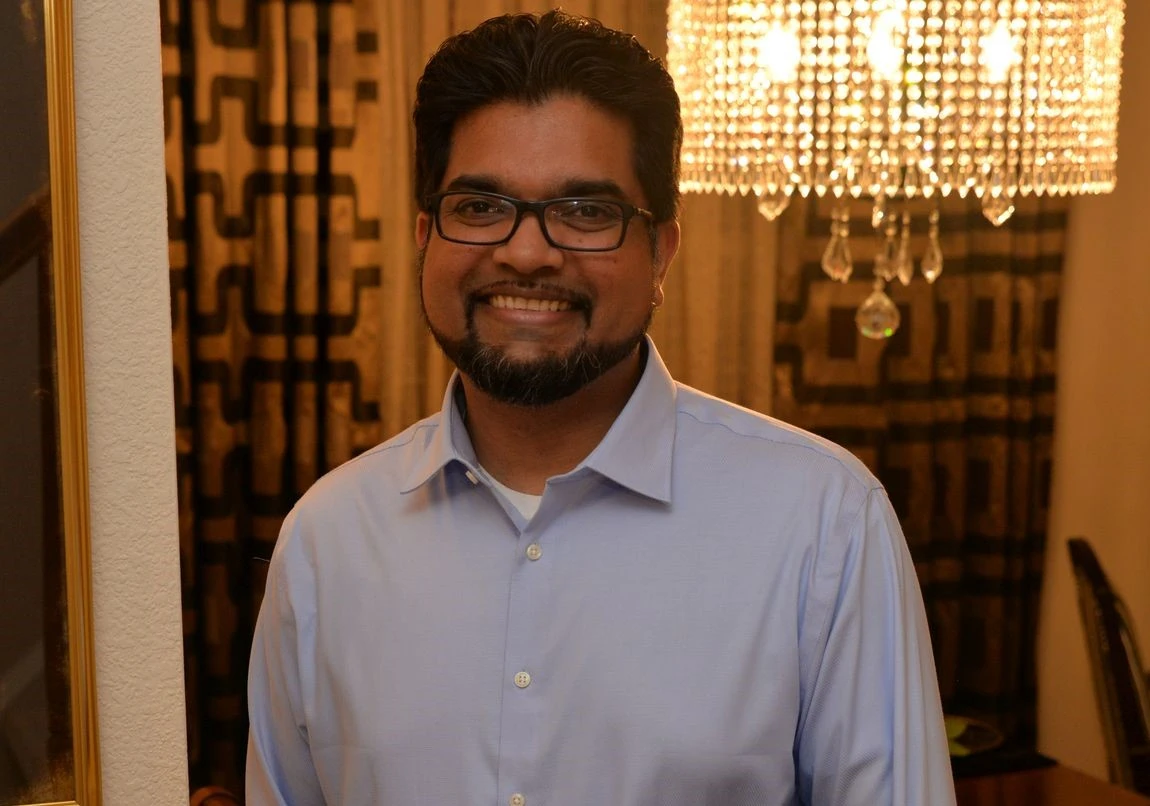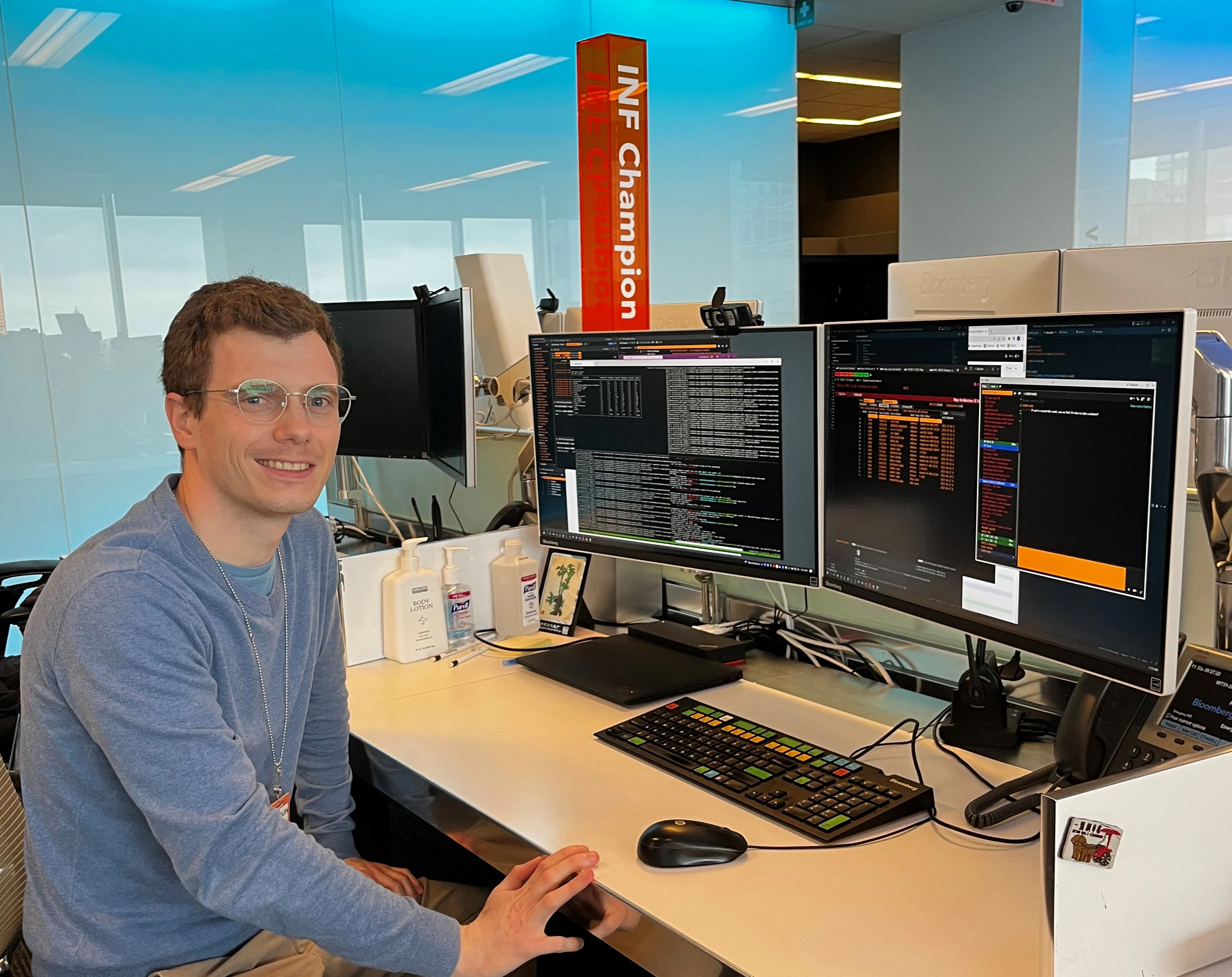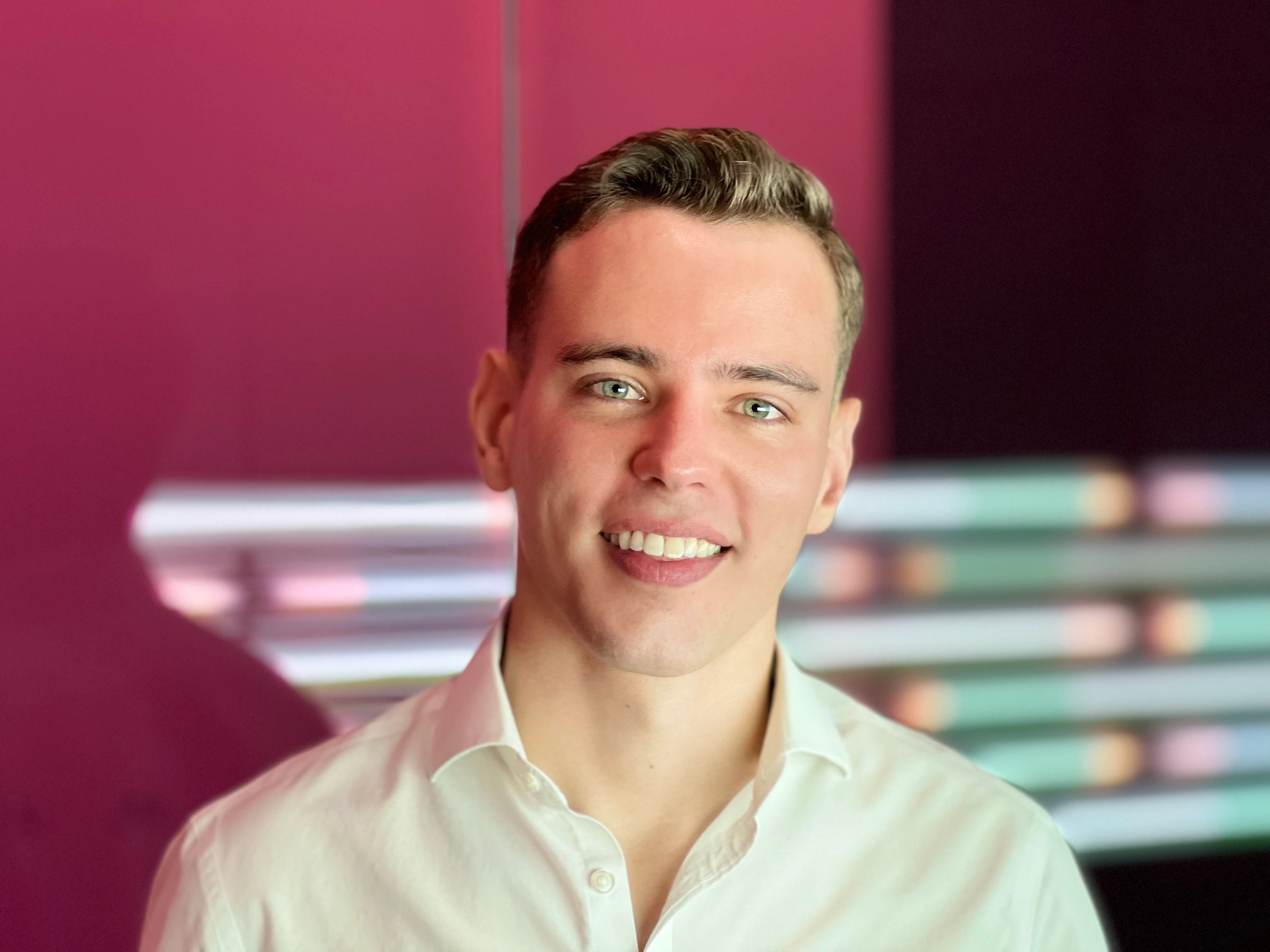Meet the Team: Structured Products Engineering
July 06, 2022
The Structured Products market makes up nearly $11 trillion of U.S. public and private bond market debt. Banks employ financial engineering to transform a variety of assets, such as residential and commercial mortgages, leveraged loans, auto and student loans, and credit card and franchise debt, into securities that are structured to meet nearly any investor appetite.
Bloomberg’s Structured Products Engineering group is committed to providing accurate data and analytics across this market for nearly two million securities across more than a dozen asset sectors, including mortgage-backed securities, commercial mortgage-backed securities, collateralized loan obligations, and asset-backed securities. In collaboration with Business and Sales teams, the engineers in this group work at the forefront of designing, developing, and delivering our product to our customers, which helps them effectively value the optionality of these securities in both the U.S. and international markets.


First, let’s meet Khawar Farooqi. He joined Bloomberg in 2002 after graduating from the New York Institute of Technology (NYIT), and now manages the Structured Products Engineering group.
What are some of the unique technical challenges your team needs to tackle?
The technical challenges stem from the complexities inherent in Structured Product securitization, as well as the sophisticated algorithms required to both determine and value their cash flows. Our engineers must carefully consider and implement designs that ensure our services will effectively scale, while maintaining the performance and availability requirements for a wide range of Terminal and Enterprise applications. The same applies to our suite of Quantitative predictive models, which are responsible for calculating and projecting critical borrower and economic measures, such as prepayments, defaults, mortgage rates, and home price appreciation.
Briefly tell us about your career path.
After joining Bloomberg as a new graduate, I was a C++ developer on our Electronic Equity Order Management System (OMS) team. I had the opportunity to gain in-depth knowledge about low-latency software.
After working as a developer and as a Team Leader for a few years, I moved to the team that managed our sell-side order management system, TOMS (Trade Order Management System), which is used in fixed income. In that role, my responsibility grew from managing 15 people to almost 50, as I led the electronic trading aspects of this department. Over the course of four years, I became a subject-matter expert in the fixed income domain and was offered a global management role, where I managed our real-time market data feeds teams. In this role, my biggest challenge was managing teams in London, Hong Kong, Tokyo, and the U.S. My priorities included ensuring consistency with our technology vision across regions and facilitating collaboration.
Now, in my role with Structured Products, which I’ve had since February 2021, I’m learning something new every day.
What’s your strategy for choosing team members?
We need to take more risk when hiring people that seem unfamiliar to us, so I encourage the team and set examples of choosing candidates with diverse ethnic backgrounds and genders.
What skills do you look for when hiring engineers for your team?
Recruiting team members involves an initial step of defining a need and role within the team with a set of responsibilities. Highly desired characteristics involve solid communication skills, the ability to influence, a high level of organization, technical competence, and ambition to further enhance their skills. We value a positive attitude, reliability, and accountability. I seek team members who are proficient in the art of computer science, and not just a specific tool.
How do you foster culture on your team?
I joined my current team during the pandemic, so learning the team’s culture has been an ongoing process. Establishing an open line of communication between me and my team has been critical in building a positive culture and work environment. Furthermore, my goal as a manager is to encourage collaboration between team members, as well as between departments, which yields positive overall outcomes.
“We need to take more risk when hiring people that seem unfamiliar to us, so I encourage the team and set examples of choosing candidates with diverse ethnic backgrounds and genders.”
– Khawar Farooqi


Elmira Drozdovych joined Bloomberg in 2016 as an equity analyst and now works as a senior software engineer with the Structured Products team.
Tell us about what you’re working on now and what your biggest challenge is. What inspires you most about it?
I’m currently working on full-stack projects for Bloomberg Terminal applications. Previously, my primary role was back-end development, and right now, I’m heavily involved in UI and UX work. Recently, I was involved in the LIBOR transition effort, working on an application that provides fallback language terms and insight on the replacement of LIBOR benchmarks. Timeliness was crucial for this project, and it helped me build my decision-making skills. Being a part of such a significant business initiative and the impact our work has on the financial markets inspires me greatly.
What is it like moving into Engineering from other non-technical departments within Bloomberg? How have you adapted?
I studied economics and finance and worked in investment banking for a few years before joining Bloomberg. I initially was a temporary contractor working on Bloomberg’s Equity Enhanced Fundamentals project. Upon completing the project, I became a full-time employee.
I spent three years as a data analyst in Bloomberg’s Data department, working closely with the Engineering teams. Eventually, until my mentor identified my aptitude and encouraged me to switch over to Engineering. My new team and manager supported me in my new role as a software engineer. I felt secure and free to ask any technical questions.
Not only did I change my career path, but also the continent I was living on. I moved from London to New York with my family. The transition process was extremely smooth and easy. Bloomberg took care of every aspect of our relocation, and I got continual support from the company as I adapted to a new country.
What advice do you have for people from underrepresented groups who are pursuing a career in tech?
My previous experience in finance has enabled me to bring a different point of view and approach, from which the entire group has benefitted. Every non-traditional tech hire with a varied background adds significant value to our overall products. I would advise leveraging such uniqueness as a strength and an advantage.
Do you feel like Bloomberg offers clear opportunities for upward mobility? Considering that, what are your career aspirations in the next 2 years?
Bloomberg’s culture constantly creates an environment to grow leaders. In the near future, I will consider challenging myself to become a team leader, mentoring and helping others to succeed. When I got so much support in growing as a software engineer at Bloomberg, I promised myself I would pay it forward.
“Being a part of such a significant business initiative and the impact our work has on the financial markets inspires me greatly.”
– Elmira Drozdovych


After five years at Bloomberg as an individual contributor focusing on distributed systems, tooling, and building a data analysis platform, Baudouin Giard became a Team Lead for the Agency Mortgage Backed Securities team within the Structured Products department.
Tell us about what you’re working on now and what your biggest challenge is. What inspires you most about it?
My team and I are building new ways for our customers to interact more effectively with the wealth of data about Structured Products that is owned by Bloomberg. Traditionally, the data on the Bloomberg Terminal is structured in a security-centric way; our new approach is to build a platform that allows clients to get a bird’s eye view of entire segments of the Structured Product market.
What makes this project particularly interesting is the array of use cases it opens. By giving context to individual data points, we are increasing transparency in the market and helping our customers make better-informed decisions. From a technical perspective, it challenges us to always “think big” in terms of scalability.
How do you keep things interesting after so many years at the same company?
After many years in the same role, it becomes easier to get a grasp of the context in which our customers use our product. I talk to a lot of customers – internal ones like our prepayment modeling team or Bloomberg Intelligence strategists and external clients. These conversations give me a better understanding of my goals and priorities.
In terms of technical growth I like pushing the boundaries of what we do and going out of my comfort zone. I like establishing a vision of what I wish my product or my tools could do, and then creating a working solution.
Tell us about the mentorship you’re receiving at Bloomberg.
As part of my transition from individual contributor to a team lead, I have been receiving extensive mentorship from a senior manager. I am acquiring the appropriate tools to help my team members expand their skill sets and careers and to foster an environment that favors transparency, innovation, and collaboration.
How does the collaborative environment at Bloomberg create opportunities to learn new skills and expand your expertise?
The proximity of engineering, product, and quantitative teams is a tremendous asset for learning new skills. There is never an assumption that anyone is proficient at everything. As a result, people are always eager to expand on their area of expertise and share their specific knowledge. Working at Bloomberg is an opportunity to learn a little more every day about how the capital markets work and in what capacity the financial system impacts our daily lives.
What do you think a team must have to be effective and healthy, particularly during this time of disruption?
A shared vision, a common goal to work towards together, is the main thing a team needs. With a clear direction, it is easier to collaborate and innovate because it provides context. In times of disruption, a shared vision can also provide a form of stability and a framework for prioritizing work across longer time periods.
What else would you like to share about your Bloomberg experience?
Bloomberg empowers people to take initiative, provided they are serving their team and the company as a whole. Every time I have wanted to work on innovative ideas or tools, I have received full support from my managers. That has allowed me to become more creative and to work on some really unusual projects.
“Working at Bloomberg is an opportunity to learn a little more every day about how the capital markets work and in what capacity the financial system impacts our daily lives.”
– Baudouin Giard
Tina Hughes leads the Multi-Path Risk team within the Analytics group of Structured Products. She has been with Bloomberg for seven years.
What made you decide to learn software engineering, and why apply it to the finance sector after so many years in Physics?
When I decided to leave academia, I wanted to take the skills I enjoyed most (problem solving and programming) and apply them in a new, rich problem space. I distinctly remember applying for a position that described Structured Products as a group that provided a wealth of interesting problems. Seven years have flown by, and I can say that this has turned out to be very true.
What do you feel is an advantage to hiring more people with career experience outside of software engineering and financial analysis?
Diversity is a popular word that gets thrown around, but it really is the heart of a strong team. In any context, it is beneficial to surround yourself with people who see things differently, communicate differently, and approach problems differently. It’s that kind of diversity of experience and thought that helps new members of a team develop their own style, and it prevents people from getting too comfortable and stagnating in their careers. There are a lot of skills that people develop in previous careers that can be applied in surprisingly powerful ways when they make the switch to software engineering.
Bloomberg has a distinctive culture. What attracted you to it?
My education and work experience prior to Bloomberg was extremely varied. I got used to being thrown into unfamiliar roles and picking up whatever relevant skills I needed in order to succeed. I came to believe wholeheartedly that people can learn and grow in any capacity provided the opportunity, and I’ve seen that value as a key feature of Bloomberg’s culture. The company provides several resources to help employees explore and shape their careers, and that’s just one example of how the company values its employees as individuals.
What advice do you have for people from underrepresented groups who are pursuing a career in tech?
Take risks! And don’t worry about whether or not you deserve the opportunities that are being offered to you. Some of the fears and reservations you have may be valid. So what? Every project is an opportunity to learn and grow, regardless of the outcome of the project itself, so just take each day as a challenge to push yourself without judgment.
In addition to focusing on your own growth, try to build a support system that can be there for you when you need an ear or a positive distraction from your daily routine. Keep a healthy perspective about your work. Bloomberg has D&I Communities where you can use events to connect with others. But if you see someone elsewhere that you relate to or admire, talk to them! I’ve never had anyone deny my request to grab a cup of coffee, and many friendships have started exactly like that.
How does the collaborative environment at Bloomberg create opportunities to learn new skills and expand your expertise?
I often tell people that a career at Bloomberg is a “choose your own adventure” story. You can seek mentors from every kind of expert, whether it’s people within your department or from one of the many technology Guilds or D&I Communities across the company. If you’re willing to invest the time in learning new skills, no one will hold you back.
What are your best tips for inspiring direct reports?
Figure out what matters to them. Every person has a unique set of values that influence how they approach and feel about their work. Don’t assume that the same things that excite you will be exciting to your team. And don’t expect that your team will adopt your values, no matter how much you emphasize them. Instead, be open-minded and accept the values that your direct reports reflect in your conversations and interactions. Understanding what drives your team members will guide you in providing the right kinds of opportunities to them.
What else would you like to share about your Bloomberg experience?
One significant reflection I have about my career at Bloomberg is that every change I’ve experienced felt scary at the time. Learning to be an interviewer was intimidating, but getting involved with recruiting allowed me to develop my network, hone my public speaking skills through career fairs and panel discussions, and contextualize my own contributions at Bloomberg. Working on highly visible projects was nerve wracking, but it helped me gain confidence in my ability to manage expectations and mitigate risks. Stepping up as a team leader almost caused an identity crisis, but I survived and learned how to help a team ride out stressful times, organize competing priorities, and motivate others. This is all to say that growth happens where you feel least comfortable, and Bloomberg will support you if you’re willing to go to that scary place.
“Every project is an opportunity to learn and grow, regardless of the outcome of the project itself, so just take each day as a challenge to push yourself without judgment.”
– Tina Hughes


Robert Vann is one of the newest members of the Agency Mortgage Backed Securities team within the Structured Products department. He joined Bloomberg as a Senior Software Engineer in January 2022.
Tell us about what you’re working on now and what your biggest challenge is. What inspires you most about it?
My team is responsible for all of the data engineering for Agency Mortgage Backed Securities at Bloomberg. Internally, we work closely with the Structured Products Quantitative Research and Modeling teams. We also partner externally with stakeholders from the Federal National Mortgage Association (Fannie Mae), the Federal Home Loan Mortgage Corporation (Freddie Mac), and the Government National Mortgage Association (Ginnie Mae), among others. It’s inspiring to see the impact of our work on so many different market participants and to have the opportunity to hear their feedback.
One big initiative I’m working on this year is improving the efficiency, reliability, and scalability of our key Agency ETL (Extract, Transform, Load) processes to enable new data points and analysis for clients. This work is exciting because it’s critical to the continued evolution of our product. Investors want to see more data and to perform more complex collateral analysis using our tools, and we must level-up our offering with a more robust and flexible data pipeline.
This initiative also presents us with an opportunity to learn about and use new and open source technologies to make our lives easier, while also growing my own skills. This is a challenging and multi-year effort, but I’ve been excited to dig in.
How did you find out about Bloomberg? What made Bloomberg stand out for you? Why did you choose Bloomberg?
Prior to joining the firm, I worked at an investment bank so I had used many of Bloomberg’s products and data in my daily work. I was quite familiar with the Terminal and some of our Enterprise data offerings; I knew Bloomberg had a reputation as a leading financial data and software provider.
Bloomberg stood out to me as a great place to grow my skills as an engineer and a leader at the intersection of software and finance, while offering the benefits of a larger company. I was looking to try something new and this role in Structured Products gave me the opportunity to learn about a new asset class, while growing as a senior engineer and learning about data engineering best practices.
How does the collaborative environment at Bloomberg create opportunities to learn new skills and expand your expertise?
Although I’ve only been here for a short time, I’ve already experienced the teamwork required to deliver new solutions for clients. Whether working on a big project or tackling a smaller code change, I’m always engaging with people both on and outside my team.
When I first joined, I was surprised by how many of my colleagues had been at Bloomberg for more than ten or twenty years. These folks bring an impressive depth of experience in both finance and software engineering. In fact, some of the engineers in the department have personally influenced the evolution of the Structured Products market. The ability to collaborate with and learn from these people is a unique opportunity that you won’t find in many other companies.
I came in with a very limited knowledge of Structured Products and I’ve already learned so much about the history of Agency MBS. In addition to the day-to-day work, experts across the team frequently host presentations or seminars on market trends, new technologies, and important projects to help keep everyone up to speed.
What advice do you have for people from underrepresented groups who are pursuing a career in tech?
Leverage the available Employee Resource Groups and mentorship programs where you work to build a network, navigate important decisions, and grow your career. In my own journey, these groups have been invaluable to my success. Whether it was finding my first job, navigating challenging situations, or deciding what I wanted to do next, the people in these groups were there to help. Having a strong network of people who share an identity or experience with you, especially outside your immediate team, brings a sense of belonging and camaraderie in a big company. These people can also be a great resource when you need to learn a new technology or navigate an unfamiliar process. Finally, these networks can be a good place to find a mentor or a sponsor (both are important to landing that next role).
Since joining Bloomberg, I’ve already gotten involved in the BProud Tech group, among others. This is an initiative which advocates for the visibility and success of the LGBTQ+ community within Engineering and beyond. I’ve been incredibly impressed by how open and helpful these folks have been.
“I was looking to try something new and this role gave me the opportunity to learn about a new asset class, while growing as a senior engineer and learning about data engineering best practices.”
– Robert Vann
Some open roles with our Structured Products Engineering team